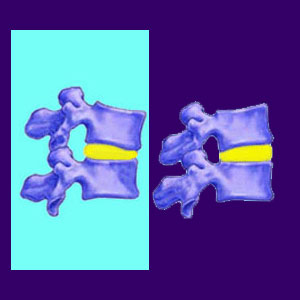
A rhizotomy is a back surgery procedure which comes in various forms and is typically used for patients with intractable chronic back pain due to neurological tissue involvement.
The most common application in the back pain industry involves using surgery to temporarily or permanently disable the spinal nerve roots, preventing further pain due to compressive lateral stenosis, foraminal stenosis or chemical radiculitis. However, other variations on the procedure are used to disable the small nerves in and around the facet joints and elsewhere in the spinal anatomy.
The thing that all rhizotomy techniques have in common is that they do not correct the underlying source of pain. Instead, they merely disable the neurological highway on which the pain messages travel to the brain.
As long as the underlying source condition will not eventually cause spinal instability or reduced physical functionality, then resolving the pain causing mechanism is not always necessary, as long as the patient finally gets some lasting and measurable relief. However, when a doctor disables nerve tissues, there is always the chance for some severe and unforeseen complications to result, so be wary.
Rhizotomy Surgical Options
Traditional procedures actually involve locating troublesome nerve roots and subjecting them to thorough testing to determine fibers which are affected by painful stimuli versus fibers which handle motor control or autonomic functionality. Once the painful nerve fibers are positively identified, they are actually severed, ending their ability to signal permanently.
In other versions of the operation, nerves may be temporarily disabled using any of the following technologies: cryoanalgesia, radiofrequency lesioning or neurotomy via heat ablation. In some cases, temporary procedures are used to test results before permanent surgical cuts are made in follow-up operations.
Learn more about facet rhizotomy and how it can help to relieve troublesome symptoms from facet joint syndrome.
Spinal Nerve Surgery Facts
Nerve root severing used to be far more common in the back pain industry and was also used to treat a great number of other anatomical woes throughout the body. However, now the traditional procedure is used mostly to treat Cerebral Palsy and a few other rare neurological conditions.
Being that nerves are actually being purposefully destroyed, there is always consequences which range from diminished sensation in certain areas of the body to organ failure, partial paralysis, incontinence and impotence. In rare cases, patients develop life threatening disorders as a direct result of their surgical nightmares. However, in some cases, the surgery is successful and offers one possible solution for those whose pain has not responded to other more conservative means.
Rhizotomy Advice
Obviously, the permanent versions of this surgery should only be used if everything else has already failed and the diagnosis is 100% positive. It would be a real shame to sever a nerve only to discover that the structure was not the actual or only painful tissue involved… Ooops. Unfortunately, this happens often and is sometimes grounds for an iatrogenic error lawsuit.
If you are considering this technique, it may be indicated to undergo a temporary version of nerve blocking using a reversible method first. This way, you can judge the results before committing to a procedure which will change your anatomy forever.
Talk to your doctor for a recommendation on the best procedures to provide test results prior to permanent correction.




